Practicality during installation operations and cost optimization are paramount conditions that participants in the construction industry seek. They are achieved in different ways and ways, but in the end they facilitate the workflow and allow to ensure a high-quality result. The transition from traditional building materials to more modern and even innovative often acts as a means of optimizing and improving the quality characteristics of the structure.
In this sense, the technology of manufacturing foam blocks, which is based on the classical method of preparing mortar, is interesting, but it is notable for its availability. A home master can also use it, but for this you will have to familiarize yourself in detail with the nuances of creating this kind of block building materials.

What are foam blocks made of?
Portland cement is used as a base, with the highest grade - for example, M 400 is suitable. Cement must meet the properties of this brand, otherwise it will not be able to perform its functions after manufacture. A distinctive feature of the foam block is the porous structure, due to which it is included in the group of cellular concrete. Therefore, the process of its manufacture will not do without a foaming agent. This can be an organic or synthetic component, the list of tasks of which will include just the formation of a loose, porous structure. In practice, it will provide the walls with many operational advantages.
Also, clay, ash and some types of industrial waste are sometimes added to the base. From the point of view of improving the technical and physical properties, such a dilution does not make much sense - adding second-rate raw materials usually aims to reduce the cost of the composition by displacing expensive Portland cement. Also, sand and water are introduced into the composition without fail.
A kind of functional segment of the components is formed by glue and fiber. As for the adhesive solution, it will be required for both the composition and the masonry. It can be one and the same product - the main thing is that it meets the requirements for use in specific conditions. From the point of view of the preparation of the solution, such properties as viscosity, adhesion, grip and chemical safety will be important. As a means of forming masonry, glue for foam blocks in a pure form is rarely used, but in any case it should be frost-resistant, tolerant to moisture, durable and fireproof. Fiber, in turn, performs the task of reinforcing. Also, in some way, the coupling function, but in a more pronounced mechanical version. Fibers minimize the risk of cracking, reinforce wall and floor structures, and reduce stress on adjacent structures.
Characteristics of the foam block
Performance characteristics are already reflected in the labeling of the foam block itself. For example, for an emphasis on thermal insulation, it is worth choosing brands from D150 to D400. This material due to its high density (a numerical value indicates the ratio of kg / m3) provides sufficient insulation for homes located in mid-latitudes. In terms of strength, this is not the most profitable option against a traditional brick, for example. The average strength limit is 9 kg per 1 cm3. Another thing is that even the production of foam blocks at home allows the introduction of plasticizers and fillers that can increase individual properties, including strength and frost resistance.
In factory conditions, technical qualities are improved due to the basic composition. Marks D500-D900 are considered structural and heat-insulating, that is, they are suitable for providing heat in the northern regions, and for maintaining reliability in terms of physical stress. By the way, the strongest blocks can withstand up to 90 kg per 1 m2 Is a brand of D1200. Sizes can be different, but there is a standardized format for the release of material, which is considered optimal. This is a foam block 200x300x600 mm, which depending on the composition provides a wall density of 300 to 1200 kg / m3. Moreover, water absorption is stable at 14%.
Casting technology
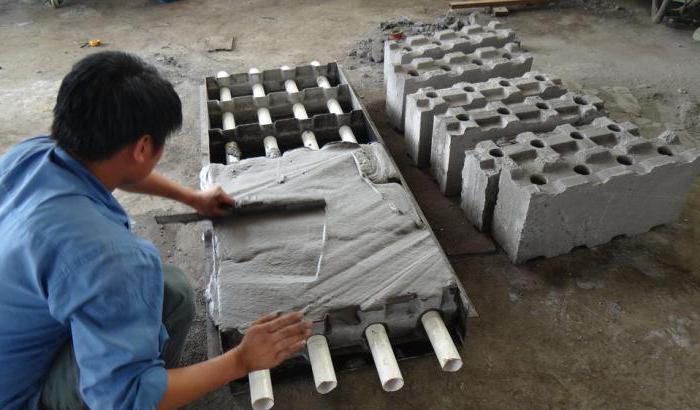
At the first stage, the preparation of the solution itself is carried out, which can be done in a conventional building hopper with the function of automatic kneading. Next, the created mixture is poured into cassette forms, where the mass of foam concrete takes the specified physical parameters. Traditional injection technologies provide for the possibility of further vibration and compaction in molds, which will improve the quality of the block. However, in simplified cassette forms, this function is absent due to the lack of an electric drive that could provide a vibration effect.
More modern formwork matrices allow you to change the configuration of the cells. That is, the user himself can adjust the thickness and length of the block in accordance with his requests. It also makes it possible to create a foam block with individual parameters in single copies - for example, for laying in difficult places. The polymerization period, i.e. solidification, varies on average from 10 to 20 hours. This largely depends on the type of adhesive used for foam blocks - waterproof, silicone or polymer based. After basic strengthening of the structure, blocks can be freed from the walls of the formwork.
Casting equipment
To implement the injection method will allow three categories of equipment. First of all, these are installations for creating a foam concrete mixture. They differ from conventional silos in that they have a device for generating foam. The average productivity of such a unit is 20-30 m3 per day, again, it depends on the specific composition. At the next stage, mobile equipment for foam blocks can be used, which will facilitate the task of transporting the mixture to the molds. It can be self-propelled machines with bunkers, and direct stationary channels for supplying the solution purposefully to the matrix.
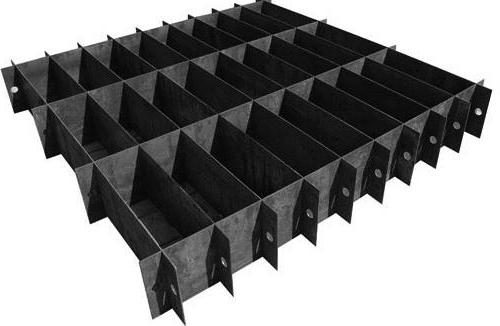
Regarding the forms themselves, it has already been noted that they are matrix cassette cells into which the mixture is poured. At home, an analog of such a device can be made from ordinary metal sheets. A kind of crate is being constructed, and it does not have to have a bottom - in the process, even factory structures are often placed on a flat surface, and this is enough to get a geometrically correct masonry material. Another thing is that the technology of manufacturing foam blocks by injection molding also provides for the possibility of easy and quick dismantling of the mold after solidification of the solution.
Cutting technology
This method of creating foam blocks also provides for individual stages of preparation and delivery of the mixture to the immediate place of the final formation of the material. But unlike the previous method, it involves a different approach to the preparation of blocks. They are formed not in the cells of the matrix, but by mechanical separation of the common array. That is, initially, priming is also performed, but not according to separate matrix forms, but into a common pallet. Then, the poured solution is cut into sectors.How exactly this operation will be performed depends on the conditions under which the cutting technology is applied. Foam blocks of factory type at large enterprises are cut by lasers and thermal heads. In small and medium-sized factories, this is done by means of saws, threads and other mechanical carvers, which deserve special attention.
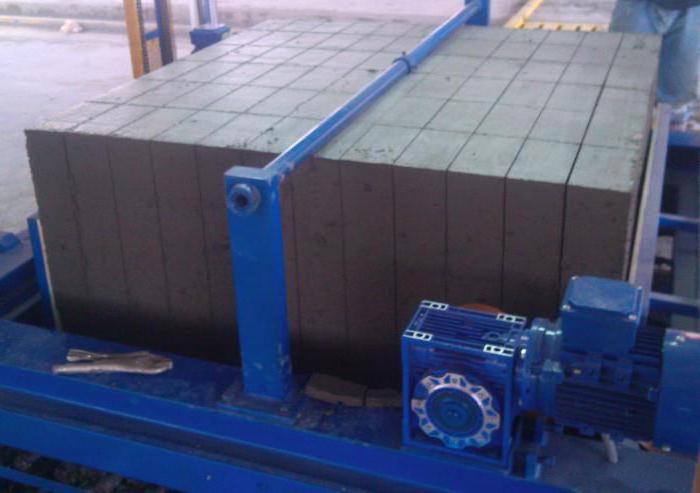
Block Cutting Equipment
Professional manufacture of foam block is not complete without special cutting lines that work with cast concrete. In terms of cutting tools, this is a very diverse equipment - band cutters, strings, circular saws, metal cables, etc. can be used. Such equipment for foam blocks is based on a platform or bed, which is also designed to accommodate the target material. In the process, the cutters pass through the monolith, leaving behind themselves strips of divided segments. Cross passage completes the cutting operation, leaving ready-made blocks.
This method has several advantages over injection molding. First of all, the accuracy of the formation of faces and sides is ensured. Thanks to this, the quality of future styling is also increased. In addition, if molding requires, in some cases, the application of special lubricants on the edges of metal cells, due to which the adhesion of the surfaces of the blocks suffers, then cutting preserves the roughness of the faces and thereby improves their adhesion to other foreign surfaces. In addition, there remains complete freedom in the regulation of the parameters with which foam blocks are produced. The sizes and weight of the products may vary: they are also performed in the standard format 200x300x600 with an average weight of 500 kg per 1 m2, and with individual characteristics.
Formwork technology
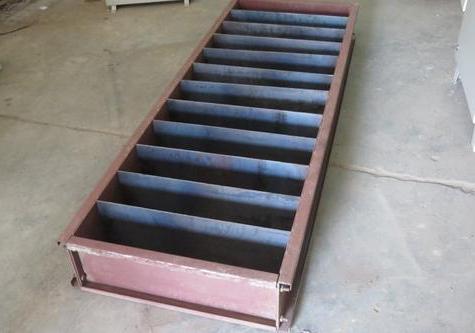
This method is essentially reminiscent of injection molding, but with a greater degree of automation. Classic molding can be completely done manually using home-made metal cells. Automatic stripping requires operator participation only in the process of regulating the pouring into the original form. Further, the machine independently picks up the molds on the pallet and holds them in its bunker (sometimes with heat exposure) until it completely hardens. It is difficult to organize such a production of foam blocks at home, since the equipment may require a connection to a 380 V network, but with a three-phase line it is quite possible. Moreover, the mixture is also prepared in a third-party way without connecting special units. After solidification, the unit automatically opens the hopper, takes out a form with blocks on a pallet and removes the formwork.
Drying foam concrete blocks
In the conditions of in-line production, when there is no time for many hours and even daily expectations of polymerization of blocks, an additional technological stage is used - thermal drying. For this, a special camera is used, in which foam blocks are loaded. Construction technologies for the manufacture of bricks necessarily include the use of furnaces as a means of firing and strengthening. Foam concrete is a less dense material, therefore it is often dispensed with without thermal influence - but this stage will not be superfluous to save time and strengthen the structure. According to experts, a furnace steaming in a couple of hours allows the unit to gain about 70% of the basic strength. Organizationally, this technology for the production of foam blocks is possible only on automated lines. The machine should automatically control the loading and unloading processes associated with the movement of cassette forms into the furnace.
Mini-factories for creating foam blocks
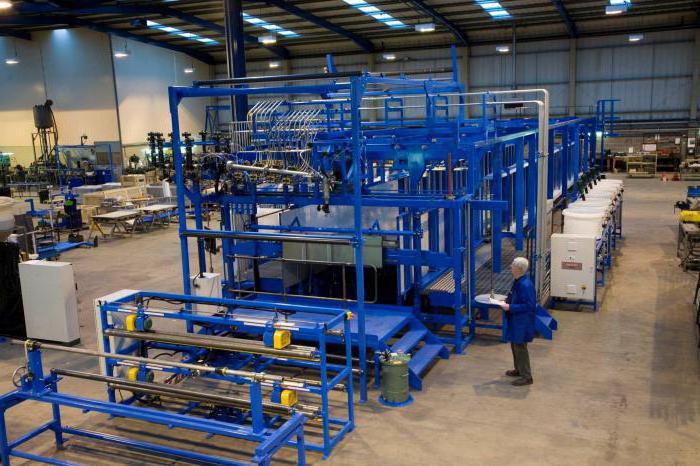
In small plants, for production purposes, they often use small production lines in which the functional areas are compactly concentrated. The concept of a mini-factory for foam blocks is based on the same principles.The operator does not need to artificially fill the gaps between the technological stages - from start to finish production is controlled by automation. The line begins with a hopper in which the mixture for foam concrete is stirred. The operator introduces into it all the necessary components with additives and sets the program for preparing the building mixture. Next, the solution is fed into a container that will form a rectangular monolith.
A typical mini-factory for the production of foam blocks works according to the method of cutting blocks, since it is initially oriented towards obtaining elements with exact geometric dimensions. After natural or furnace hardening, the monolith is sent to the automatic cutting stage, from where it is forwarded to the collection point in the form of ready-made blocks.
Conclusion
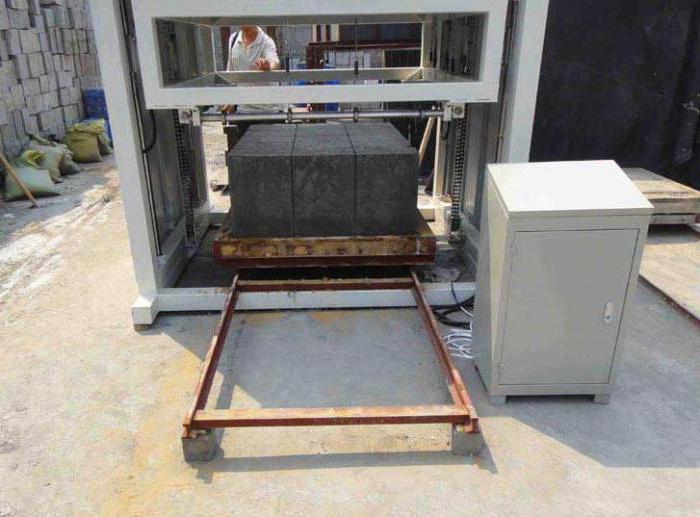
Making foam concrete building material is much simpler than brick or panel slabs. But does this material justify itself in practical use? Such blocks are small in weight, therefore, the strength will initially be incomparable with ordinary brick. But there are also positive properties in cellular concrete. Even the simplified manufacturing technology of foam blocks without special additives allows us to achieve high thermal insulation qualities. Therefore, even with a modest mass and density, such a unit can guarantee an optimal microclimate. In terms of environmental safety, this is also a good option for building a house. Again, if you do without special modifiers, the design will be chemically safe for residents.
But the main advantage of the foam block is its financial savings. Both manufacturing technology and logistics during construction and transportation require minimal investment compared to alternative masonry and panel building materials.